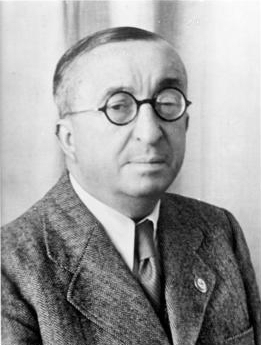
Ernst Heinrich Heinkel was one of Germany’s finest aeronautical engineers. From the jet plane to the first ejection seats, many of his inventions have left their mark on aviation history. But his name remains associated with Nazi Germany’s Luftwaffe.

Promising beginnings
As early as 1908, he understood that the dirigible balloon could not be the future of aviation following the Zeppelin disaster. In 1910, he built and flew his first airplane. In 1913, he became chief engineer at Albatross. He then built the first seaplanes in Sweden, to thwart the ban of the Treaty of Versailles. He established his own company, Ernst Heinkel Flugzeugwerke A.G., after the liquidation of Hansa-Brandenburg in 1922.
As a reward for his pioneering work in aerodynamics, Heinkel was twice awarded honorary doctorates, in 1925 and again in 1932. He also developed theHeinkel He 70 for Deutsche Lufthansa. It was, at its time, the fastest commercial aircraft in the world. In 1932, even with the German engines of the time, it reached a speed of 370 km/h and 400 km/h with Rolls Royce engines.
The Luftwaffe
The collaboration between Heinkel and the Luftwaffe marked an important milestone in the inventions. The quest for speed was a constant in his inventions. It started with the adaptation of the Heinkel He 70 so that they could be used as a bomber. This resulted in the prolific Heinkel He 111. The He 111 became a staple of the Luftwaffe. Later, he built the He 177 Greif (“Griffon”) which was despite appearances a four-engined heavy bomber of a mass similar to the American B-24s.
 It was during this troubled period that he carried out his work on jet planes and rocket engines, which changed the landscape of aeronautics. This work culminated in 1938 with the Heinkel He 176, the world’s first aircraft designed to fly with a liquid-fuelled rocket engine.
It was during this troubled period that he carried out his work on jet planes and rocket engines, which changed the landscape of aeronautics. This work culminated in 1938 with the Heinkel He 176, the world’s first aircraft designed to fly with a liquid-fuelled rocket engine.
Heinkel, being the epitome of the solitary inventor, came increasingly under the influence of the state and had to accept the financial consolidation of his group by the Third Reich. By 1945, Heinkel’s group employed about 50,000 people, a significant portion of them forced laborers and concentration camp prisoners.
The post-war period
Ernst Heinkel was first arrested in 1948 and classified as a sympathizer of the Nazi regime. He was discharged by the Allies because of his links with a circle of resistance fighters. In 1950, the Heinkel factories took over engine production in Stuttgart. Constrained by the restrictions imposed on post-war German industry, Heinkel then turned to building two-wheelers. In 1955, Heinkel made carts called Kabinenroller, like those produced by his compatriot Willy Messerschmitt. The company was taken over in 1964 by VFW-Fokker.
Ernst Heinkel died on 30 January 1958 in Stuttgart.